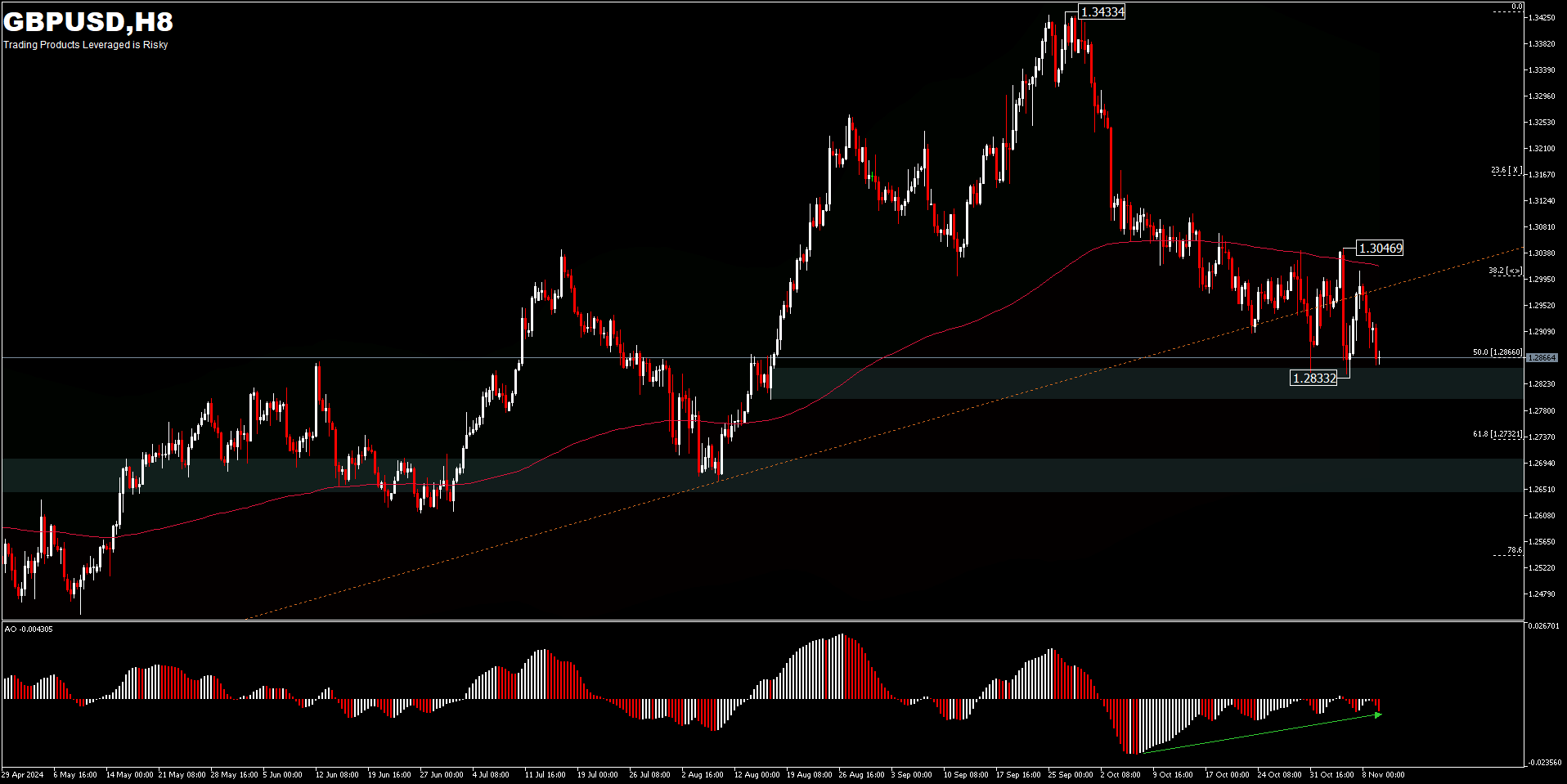The pound sterling traded below $1.2880, the lowest in around three months, pressured by a stronger dollar. The Pound drifted further after the higher than expected UK wage growth which dampened easing expectations.
UK ILO unemployment unexpectedly jumped to 4.3% in the three months to September. A mixed report for the BoE, with signs that higher wages are prompting companies to reduce staffing levels. However, the fact that pay growth remains sticky, will back Bailey’s argument in favor of ongoing caution when it comes to additional rate cuts. A gradual path also allows the central bank to monitor the impact of the budget on growth and inflation.
The Greenback’s recent strength has been attributed to rising expectations of increased investment and government spending in the United States, supported by speculation that Republicans will soon take over the Senate and House of Representatives. If this happens, it will pave the way for faster policy implementation under the Trump administration, including higher import tariffs and tax cuts. While such changes are likely to increase the US fiscal deficit, they could also contribute to inflationary pressures, prompting the Federal Reserve to take a tighter stance on monetary policy.
Despite this increased fiscal optimism, Fed Chair Jerome Powell tempered expectations of an imminent change in the central bank’s policy framework. Last Thursday, the Fed cut rates by 25 basis points to a target range of 4.50%-4.75%, which underscored its cautious approach to monetary easing. Powell’s remarks dismissed the notion that fiscal changes would lead to an immediate tightening cycle.
Meanwhile, the Bank of England implemented its second 25bps rate cut this year last week and maintained a cautious stance towards further rate cuts. Policymakers emphasised the need for tight monetary policy, which supports a gradual easing approach. Traders continue to expect two more quarter-point reductions from the BoE by the end of next year, with just under a 50% chance of the second one.
BoE Governor Andrew Bailey suggested that the central bank will continue to take a measured approach to monetary easing, emphasising the importance of lowering inflation sustainably to the 2% target.

From a technical perspective, GBPUSD is still range-bound above its 1.2833 temporary low and the intraday bias remains neutral for now. Further declines are expected as long as the 1.3046 resistance holds. A break of 1.2833 will resume the decline of 1.3433 to the 61.8% retracement of the 1.2298 to 1.3433 pullback at 1.2732.
For now, GBPUSD is moving below the 200-bar EMA and has broken the ascending trendline from the April-August low pullback, an indication of selling pressure amid a stronger US Dollar. However, considering the bullish convergence on the AO, a strong break of 1.3046 will indicate a short-term bottoming, and turn the bias back to the upside.
Click here to access our Economic Calendar
Ady Phangestu – Market Analyst
Disclaimer: This material is provided as a general marketing communication for information purposes only and does not constitute an independent investment research. Nothing in this communication contains, or should be considered as containing, an investment advice or an investment recommendation or a solicitation for the purpose of buying or selling of any financial instrument. All information provided is gathered from reputable sources and any information containing an indication of past performance is not a guarantee or reliable indicator of future performance. Users acknowledge that any investment in Leveraged Products is characterized by a certain degree of uncertainty and that any investment of this nature involves a high level of risk for which the users are solely responsible and liable. We assume no liability for any loss arising from any investment made based on the information provided in this communication. This communication must not be reproduced or further distributed without our prior written permission.


















